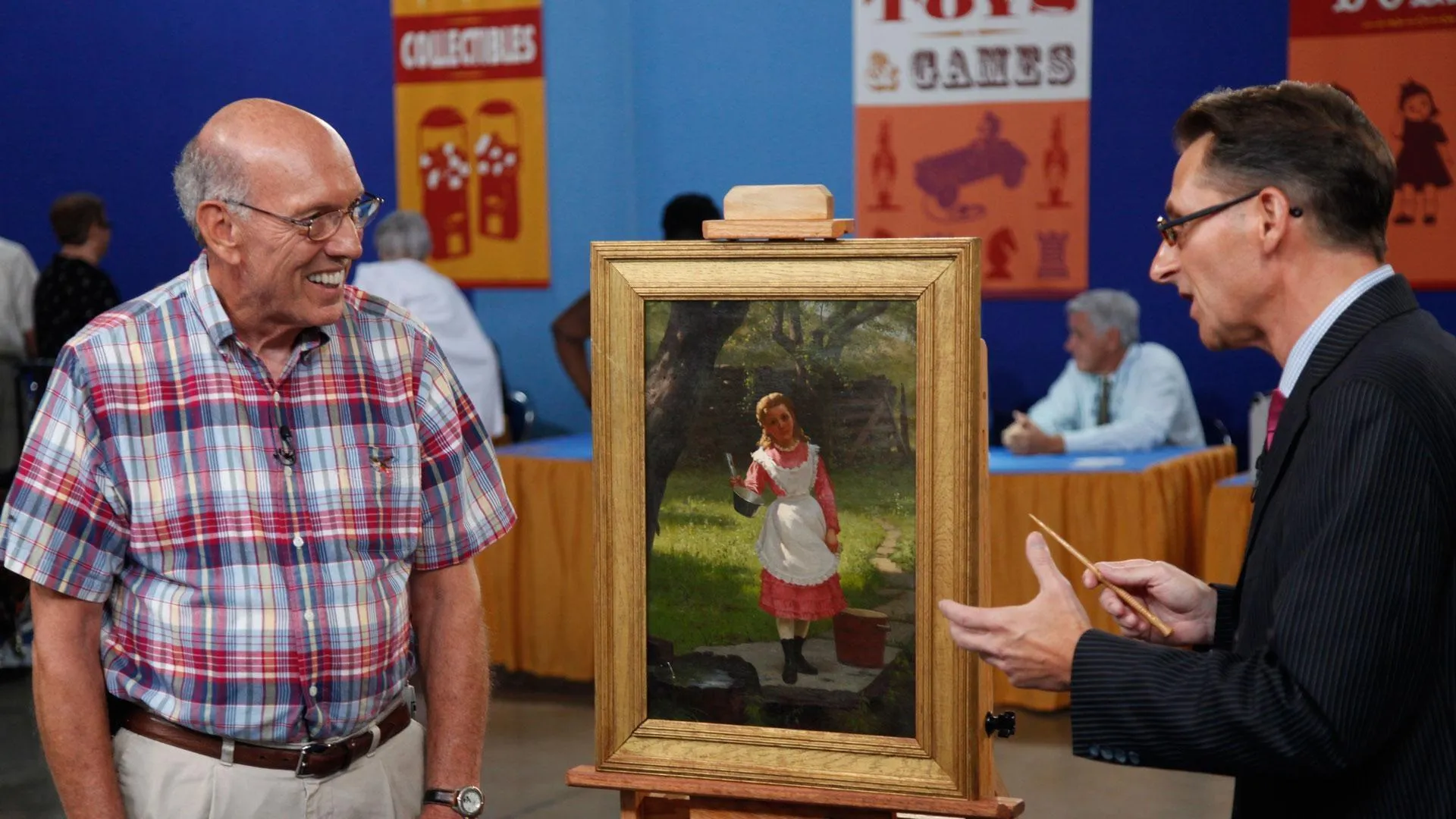GUEST: After World War II, my mother and father settled in Fort Lauderdale, and my father was a pilot, and one of his buddies, uh, either they bought about four rugs from him or either he gave them to them. And they've been sitting on the floor for about... till the '70s, late '70s. And at that point, a friend came from Nevada and mentioned that we should take the rugs off the floor. So, they did, but they never really looked into the value or this or that. When they passed away, I ended up getting them.
APPRAISER: This is a Navajo weaving from the Navajo reservation in the southwest part of the United States, in Arizona. The history of Yei rugs really comes from the Navajo sand paintings, which were very religious. Now, this is a commercial product. And I can tell you, the Navajo were extremely reluctant to do anything for commercial purposes that referred back to their sand paintings because they were very religious. This tradition came out of the pictoral period in 1890. There was a guy named Will Evans that was a trader at the Ship Rock trading post from about 1912 to 1948. He is generally credited with starting the tradition of the Yei rugs. And this particular one, in my judgment, dates to about 1930, 1940. So it's fairly early in the tradition. These figures represent a Yei divinity or religious figures. You have the corn and you have... this is probably cotton here. This is generally called the rainbow Yei that encircles the whole thing. This is probably a rattle. Basically they're depicting a sacred Navajo man. In this particular period, they're dealing with aniline dyes, and those are dyes that were probably made in Germany and traded to the Navajos. So you get these very vibrant oranges and reds and greens. This is probably a natural here, as is this down here. So, it's just typical of this period. Now, what is really amazing about this is the condition. Generally when we talk about Navajo weavings, we talk about an A and a B side. And if you lift it up, you can see that there's very, very little fading on this side. The sun can kill these things. And this is almost in pristine condition. You do have some small spots. You should never clean these on your own and always go to a professional Navajo rug cleaner. Generally speaking, this is in excellent condition on both sides. So I'm going to call it two A sides. This is a very, very tight weaving. So, in my judgment, this really represents one of the finest Yei rugs we've had on the ROADSHOW. I am absolutely amazed that this was on the floor at all and it's in this kind of condition. We had a little bit of a debate on the table. There were a couple of us that thought this was in the $3,000 to $5,000 range. There was one appraiser that felt it could go a little bit higher, $6,000 to $8,000. Now, that would be a price that you'd expect to find in a gallery-- a gallery in Santa Fe or New York or San Francisco. It's a really special piece.
GUEST: I'm glad I didn't spill anything on it as a kid.
APPRAISER: I am too.











